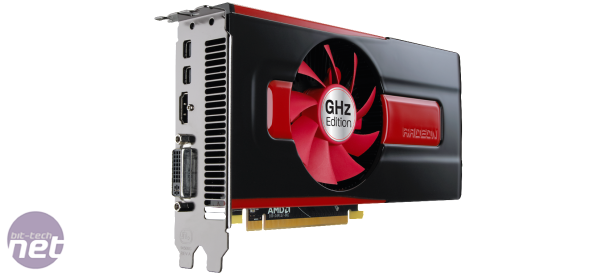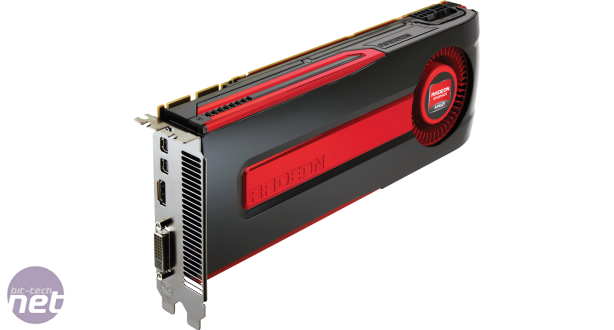The Path of Progress: Tracking the evolution of AMD’s graphics cards
September 6, 2012 | 09:25
Companies: #amd

Now, with a compatible 3D monitor, 6000-series card owners could watch 3D video and play games in stereoscopic 3D. The perfect match for high resolution 3D gaming was the Radeon HD 6990, at the time the fastest GPU in the world. Its twin Graphics chips on a single PCB brought the benefits of AMD Crossfire on a single card, with enough power to handle the 120fps needed to display 3D games smoothly.
Which brings us to today – 2012 sees AMD's latest 7000-series takes everything we’ve seen before and kicked it into overdrive. Built using 28nm Graphics Core Next (GCN) architecture, it’s a new evolution for AMD graphics cards that not only focuses on gaming performance, but also the highly useful mouthful that is general-purpose computing on graphics processing units (GPGPU).
Looking purely at the numbers, GCN is a major leap forward from the VLIW chip architecture used for AMD’s North Islands 6900-series graphics cards. As well as shrinking down to a 28nm fabrication process, the transistor count has increased by almost 60%, squeezing 4.3 billion transistors into a die measuring 352mm2. By contrast, the previous generation 40nm architecture only had room for 2.6billion transistors, even though die sizes were larger overall.
The flagship Radeon HD 7970 combines these figures with an impressive 2,048 processor cores, 128 texture units and 32 compute units – an increase across the board compared to the previous incumbent, the Radeon HD 6970. The 3GB frame buffer is the largest ever seen in a single GPU AMD graphics card, and it has sensibly been paired with a wider 384-bit memory bus which increases memory bandwidth by as much as 50%.
A core clock of 925MHz is 45MHz faster than the previous generation, and that’s just the reference design – if you choose the right board partner, expect to see clock speeds in excess of 1GHz. Even with this increase, the overall thermal design point (TDP) hasn’t increased from the 250w figure first seen in the Radeon HD 6970.
Of course, all of AMD’s previous innovations make a re-appearance, from EyeFinity and CrossFire to HD3D support. Whether you have one monitor or several, plan to play in 2D or 3D or want to build a system with multiple graphics cards, the Radeon HD 7000-series has you covered.
Beyond graphics performance, the GCN architecture has also been designed to take advantage of general-purpose computing on graphics processing units (GPGPU), which allows OpenCL-programmed applications to use the GPU to accelerate performance, offloading CPU-intensive tasks away from the processor and onto the graphics card. With the right application, such as Adobe Flash player, Cyberlink’s Media Expresso and PowerDirector or WinZip, a Radeon HD 7000-series graphics card can speed up intense workloads such as video editing, file compression and multimedia playback.
These improvements have also trickled down to AMD’s mid-range GPUs, in the form of the Radeon HD 7770 GHz edition and the HD 7750. The GHz edition is the world’s first graphics card to come with a 1GHz core clock out of the box, and both cards are built on the same GCN architecture as the Radeon HD 7970. With support for PCI Express 3.0, 4K video and DirectX 11.1, they are ready for the next generation before it even arrives.
AMD has come a long way in a short space of time – almost every year saw new technologies launched, refined and adopted by gamers, and this year it’s no different. The Radeon HD 7970 and HD 7950 are the two cards leading the charge, providing the same great gaming performance you’ve come to expect from AMD as well as support for the latest GPU-accelerated applications. It’s ready to take your rig’s graphics performance to new levels.
This feature has been sponsored by AMD. More details of the current Radeon range can be found at AMD's website, incidentally, right here: amd.com/radeon
Click to enlarge
Which brings us to today – 2012 sees AMD's latest 7000-series takes everything we’ve seen before and kicked it into overdrive. Built using 28nm Graphics Core Next (GCN) architecture, it’s a new evolution for AMD graphics cards that not only focuses on gaming performance, but also the highly useful mouthful that is general-purpose computing on graphics processing units (GPGPU).
Looking purely at the numbers, GCN is a major leap forward from the VLIW chip architecture used for AMD’s North Islands 6900-series graphics cards. As well as shrinking down to a 28nm fabrication process, the transistor count has increased by almost 60%, squeezing 4.3 billion transistors into a die measuring 352mm2. By contrast, the previous generation 40nm architecture only had room for 2.6billion transistors, even though die sizes were larger overall.
The flagship Radeon HD 7970 combines these figures with an impressive 2,048 processor cores, 128 texture units and 32 compute units – an increase across the board compared to the previous incumbent, the Radeon HD 6970. The 3GB frame buffer is the largest ever seen in a single GPU AMD graphics card, and it has sensibly been paired with a wider 384-bit memory bus which increases memory bandwidth by as much as 50%.
A core clock of 925MHz is 45MHz faster than the previous generation, and that’s just the reference design – if you choose the right board partner, expect to see clock speeds in excess of 1GHz. Even with this increase, the overall thermal design point (TDP) hasn’t increased from the 250w figure first seen in the Radeon HD 6970.
Of course, all of AMD’s previous innovations make a re-appearance, from EyeFinity and CrossFire to HD3D support. Whether you have one monitor or several, plan to play in 2D or 3D or want to build a system with multiple graphics cards, the Radeon HD 7000-series has you covered.
Click to enlarge
Beyond graphics performance, the GCN architecture has also been designed to take advantage of general-purpose computing on graphics processing units (GPGPU), which allows OpenCL-programmed applications to use the GPU to accelerate performance, offloading CPU-intensive tasks away from the processor and onto the graphics card. With the right application, such as Adobe Flash player, Cyberlink’s Media Expresso and PowerDirector or WinZip, a Radeon HD 7000-series graphics card can speed up intense workloads such as video editing, file compression and multimedia playback.
These improvements have also trickled down to AMD’s mid-range GPUs, in the form of the Radeon HD 7770 GHz edition and the HD 7750. The GHz edition is the world’s first graphics card to come with a 1GHz core clock out of the box, and both cards are built on the same GCN architecture as the Radeon HD 7970. With support for PCI Express 3.0, 4K video and DirectX 11.1, they are ready for the next generation before it even arrives.
AMD has come a long way in a short space of time – almost every year saw new technologies launched, refined and adopted by gamers, and this year it’s no different. The Radeon HD 7970 and HD 7950 are the two cards leading the charge, providing the same great gaming performance you’ve come to expect from AMD as well as support for the latest GPU-accelerated applications. It’s ready to take your rig’s graphics performance to new levels.
This feature has been sponsored by AMD. More details of the current Radeon range can be found at AMD's website, incidentally, right here: amd.com/radeon

MSI MPG Velox 100R Chassis Review
October 14 2021 | 15:04










Want to comment? Please log in.